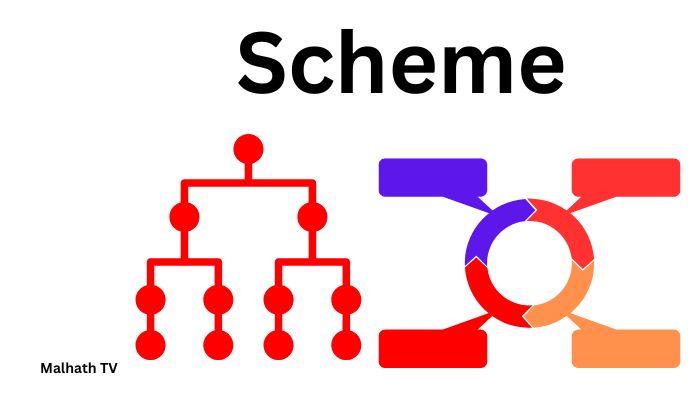Scheme
We explain what a scheme is, what it is for and what types exist. In addition, how it is made and its relationship with a concept map.
What is a schema?
A scheme is a graphic representation that is used to express the main concepts of a subject in order to understand or study them.
It is usually done after reading and underlining the main ideas of a text, and it is a simple and clear way to analyze and organize concepts through words and graphic resources.
The scheme is an extremely useful tool for studying and organizing information, since it gives an overview of the topic to be studied through a synthesis and allows the reader to visually memorize the main ideas. Also Read: What is it Noun?
Characteristics of a scheme
- Presents information clearly and directly, following criteria so that it can be interpreted simply and quickly.
- It includes the fundamental concepts of a theme and its main relationships. You should not take into account details or information that is not relevant.
- Present the information visually appealing to be absorbed by the reader effectively.
- Conceptual: Graph the main ideas of a theme.
- Study method: It is an effective tool in the understanding and study of a subject.
How is a scheme made?
There are certain steps that are useful to make an outline about the content of a text:
- Read the writing comprehensively: In this first step, all available sources are used from which the information for the scheme will be obtained.
- Underline the main ideas: The ideas of the text that allow understanding the subject of study are highlighted, secondary or tertiary ideas or any data or concept that is deemed necessary can also be underlined.
- Choosing keywords: The most representative concepts (or short phrases) of the theme are obtained from the main ideas. Details should be omitted, since one of the fundamental characteristics of the scheme is that it be synthetic and brief.
- Determine what type of scheme is going to be used: Although there are pre-formatted schemes, this tool allows each person to adapt it to their preference and according to the subject of study. It is advisable to make your own outline (and not made by another) because the process of summarizing and organizing the information is beneficial for understanding and memorizing the topic.
- Relate the ideas: It is recommended to take note of the ideas and the order in which they will be related or classified and then dump them into the scheme.
- Graph the scheme: It is important to be clear about the order of the information and the content to be included. In some cases, more than one scheme can be made to graph the different branches or sub-themes within a broad or complex theme. It is usually useful to use capital letters to emphasize the fundamental concepts and lower case for the elements present in them. Certain graphic resources such as boxes, lines, arrows, keys, letters or bars can be included in the scheme to facilitate its assembly and understanding. Must Read: Types of Essay
Types of schemes
There are different types of schemes that vary in their design, size or the way in which the information is arranged. It is important to know them to choose the scheme that best suits the type and quantity of material with which you work.
Among the most prominent are:
Key diagram or synoptic table
Use braces or brackets to organize the information from left to right in a hierarchical manner, going from the general to the specific. It starts from the main concept and contains the secondary and tertiary ideas in keys: the greater the number of keys, the greater the specification of the information. It is useful when the theme has many subdivisions.
arrows scheme
It uses arrows to organize the information from left to right or to the sides, so it can include a large number of concepts and information. It starts from a main concept from which arrows enclose the secondary and tertiary ideas: the greater the distance from the main concept, the more specific the information.
branching scheme
It uses a main concept from which the other ideas descend from the general to the particular. It is used to represent classifications or subtopics.
Flowchart
It is used to graph the steps or activities within a process from geometric figures, which represent concepts connected to each other by arrows that mark the direction of the process.
Scheme and concept map
A concept map establishes a network between concepts based on their relationships.
A concept map is a diagram that connects, through lines, concepts that it encloses in geometric figures (nodules). Linking words are used on these lines that facilitate the understanding of the ideas.
It is a synthetic and simple scheme in which the main concepts of a theme are reflected, establishing a network based on the relationships that exist between them. It differs from other schemes because the relationship between concepts prevails and it has a structured format, since it does not use varied graphic resources like the rest of the schemes.
This type of diagram was created in 1972 by Joseph Novak and its fundamental elements are:
- Concepts: They are enclosed in figures called nodes.
- Lines: Join the different nodules.
- Connecting words: They are located on the lines and establish the relationship that unites the concepts.
- Set of concepts: That form a statement that contains an idea.
The concept map is one of the most used study tools due to its design that generates a great visual impact that allows the reader to know the relationships between the concepts quickly and clearly.
Scheme Meaning, schemas examples, scheme of work, scheme of arrangement.
| Home Page | Malhath TV |
